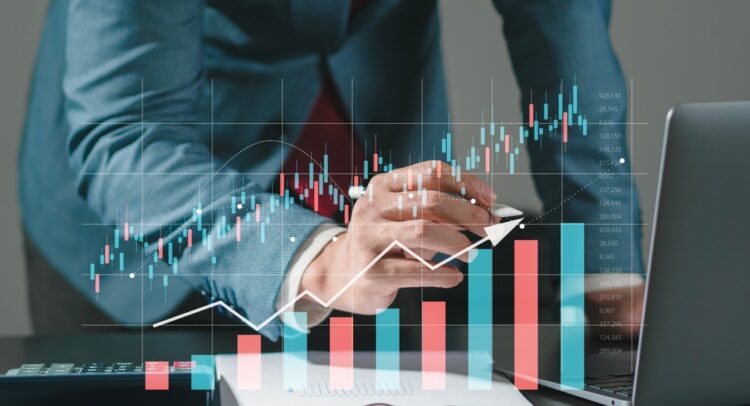Last Updated: 4:17 PM EST
Discover the Best Stocks and Maximize Your Portfolio:
- See what stocks are receiving strong buy ratings from top-rated analysts.
- Filter, analyze, and streamline your search for investment opportunities with TipRanks’ Stock Screener.
Stock indices finished today’s trading session in the green. The Nasdaq 100 (NDX), the S&P 500 (SPX), and the Dow Jones Industrial Average (DJIA) gained 0.22%, 0.53%, and 0.92%, respectively. Earlier today, analysts at UBS warned that if the 10-year U.S. bond yield reaches 5%, it could have a negative impact on the stock market. Currently, the yield is at 4.65% and rising.
However, Andrew Garthwaite, UBS’ chief global equity strategist, predicted that the yield will reach 4.25% by year-end. He also advised investors to stay underweight non-financial cyclicals, which tend to correlate with bond yields, and instead focus on defensive stocks with low financial leverage.
Garthwaite recommends defensive stocks such as SAP SE (SAP), Microsoft (MSFT), and Abbott Labs (ABT), which are less likely to be affected by rising yields. He also notes that Japan is the best-performing region when TIPS yields rise while emerging markets tend to underperform.
Garthwaite also warned that there is a risk for a market bubble to form and said that six out of seven preconditions are currently being met. These preconditions include:
- The end of a structural bull market
- Profits being under pressure
- The loss of breadth
- A gap of 25 years from a previous bubble
- The notion that “this time is different”
- Retail participation
The only missing precondition is “loose monetary policy.” Garthwaite notes that the average price-to-earnings ratio of top tech stocks, including Amazon (AMZN), Apple (AAPL), Alphabet (GOOGL), Nvidia (NVDA), Meta (META), and Microsoft (MSFT), is already high at 28x. However, he suggests that a bubble could be justified if Generative AI drives productivity growth or if interest rates remain low.
First Published: 3:45 AM EST
U.S. stock futures traded slightly lower on Thursday, following a positive session yesterday, with S&P 500 (SPX) hitting an intraday record high. Meanwhile, futures on the Nasdaq 100 (NDX), the Dow Jones Industrial Average (DJIA), and the S&P 500 were down 0.45%, 0.04%, and 0.2%, respectively, at 3:14 a.m. EST, January 23.
In yesterday’s session, the S&P 500 closed 0.61% higher, falling just short of a record close and extending its winning streak to three sessions. At the same time, other major indices such as the Dow Jones and the Nasdaq Composite also ended the day higher by 0.3% and 1.28%, respectively. Wall Street’s positive investor sentiment was boosted by hopes of potential tax cuts and deregulation under President Donald Trump, along with signs of steady economic growth.
On the earnings front, the fourth-quarter earnings season has kicked off strong, with Netflix (NFLX) stock rising over 9% in Wednesday’s trading following impressive Q4 results. Similarly, Alaska Air (ALK) saw gains in after-hours trading after exceeding earnings expectations. However, Halliburton (HAL) stock dipped, impacted by mixed Q4 results and a soft 2025 outlook.
Looking ahead, investors are eyeing earnings reports from major companies, including GE Aerospace (GE), American Airlines (AAL), Intuitive Surgical (ISRG), and Union Pacific (UNP), all of which are set to release their results today.
Meanwhile, the U.S. 10-year treasury yield was up, floating near 4.301%. Simultaneously, WTI crude oil futures are trending lower, hovering near $75.23 per barrel as of the last check.
Elsewhere, European indices opened mixed on Thursday, following a week of positive momentum.
Asia-Pacific Markets Traded Mixed on Thursday
Most of the Asia-Pacific indices were mixed today as investors evaluated a slew of economic data in the region, with Chinese stocks driving the gains.
At the same time, Hong Kong’s Hang Seng Index was down 0.42%. Also, China’s Shenzhen Component index was down 0.49%, but Shanghai Composite index was up 1.37%. Meanwhile, Japan’s Nikkei and Topix indices gained 0.79% and 0.53%, respectively.
Interested in more economic insights? Tune in to our LIVE webinar.









